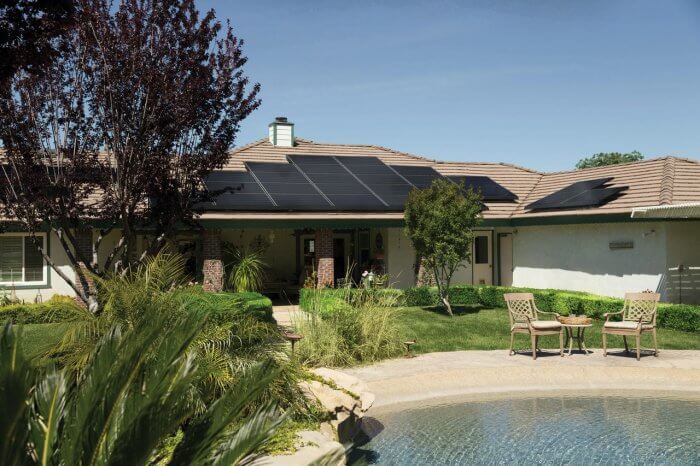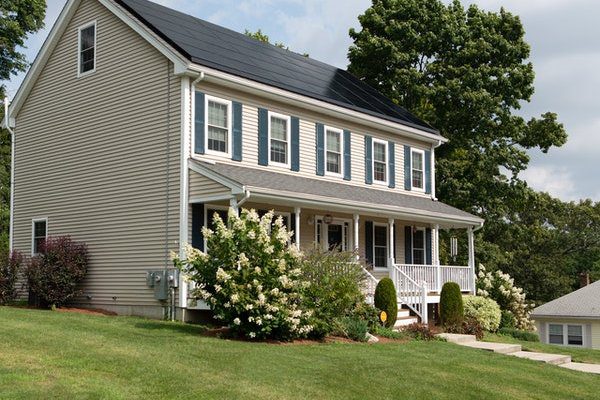
Solar power is around 20 to 50% cheaper than most energy sources, making it the cheapest source of electricity in history. This is one of the major reasons why countries are adopting this renewable resource.
Whole countries aren’t the only ones who can enjoy its benefits, though. Homeowners can opt-in, too, by having solar panels installed in their homes.
It’s a big change, so we understand if a lot of people are in doubt. Still, you can learn how to go solar with a few steps. Dive in to read our tips for going solar below.
Compute Your Electricity Consumption
Before you learn how to go solar, you need to know how much electricity you need to power your whole house first. This will give you an idea of how big of a system you need to have installed.
The easiest way to know is to check your monthly consumption (kilowatt-hours) on your bill. Note that your bill will vary in the hotter and colder months. As such, you’ll need to get your bills for the last 12 months to get your annual consumption.
On average, an American household consumes around 10,649 kWh yearly. Yours may be higher or lower depending on your location.
Based on your usage, you should then decide whether to get a system that will supply a part or all your needs. The bigger you go, the bigger your initial investment will be but also the bigger the savings in the long run.
For residential use, the typical system range from 3 kWh to 10 kWh in size. A 3-kWh system produces around 3,600 to 4,800 kWh per year, while a 10-kWh system produces 12,000 to 16,000 kWh per year.
Choose the Right Solar Energy System
The most common type of solar energy system is a roof mount. Meaning, it’s attached to your roof to get as much sun as possible.
You might also consider getting a ground mount system or a customized structure. Community solar gardens are also a good idea. It all depends on your needs and several factors, such as the following:
Your Location
Your location will dictate how much sun your property gets. However, other factors can affect your sun exposure.
Tall trees or nearby buildings, for example, can create shade on your roof. In this case, roof panels might not give you the full benefits of solar energy.
Your Roof
The orientation, angle, and condition of your roof are also important factors. South-facing roofs are the most ideal, but the west- and east-facing ones can work, as well. North-facing roofs, however, limit the production of energy.
A slope of 15 and 40 degrees also allows the solar panels for your home to perform best. For other slopes, you might need to consult first with a solar company.
The condition of your roof also determines your eligibility for solar panels. If it’s unstable or due for a replacement any time soon, you can’t make a long-term commitment such as installing a solar energy system.
Aesthetics
Do you care about aesthetics? If so, ground mount systems might be better for you. Some homeowners don’t like how the solar panels alter the look of the roof.
You might also face some restrictions from your HOA or district. If you’re involved with a historical development body, you might not be able to make some exterior changes to your home.
Space
The space on your roof and property determines which is better for you. Do you have enough space on your roof? For reference, you’ll need at least 100 square feet per kilowatt-hour.
You’ll have to consider the amount of sunlight your property gets. You’ll need a bigger system if you have a lower sun exposure, which means you need a bigger space.
Check Your Electric Utility’s Solar Policy
Every electric company has its policy about the electricity you generate that goes back into the grid. In South Carolina, where you can check out Blue Raven Solar, they have a Net Metering policy.
With this policy, any excess energy you produce will give you a 1:1 credit you can use in later bills. This means you can use the credits to pay your next bill if the power you generate doesn’t cover your whole consumption.
There’s also a Sell-Excess policy, in which you sell the excess electricity at a lower wholesale rate. You don’t sell it at the same rate you pay for power from the utility.
Knowing your utility’s policy will help you plan which gives you a better return on investment. In the case of the second policy, for instance, you might want to get a system that limits any excess energy.
Look for Solar Financing Options
Solar installations are now more affordable because of the numerous financing options and incentives by the state, utilities, and other organizations. See what options are available to your location first.
When doing your research, you might encounter power purchase agreements (PPA) or solar leases. You can also get loans in the same way you’d get a home improvement loan. The monthly bill is usually still cheaper than your electric bill.
With a PPA, you can get a solar energy system installed at no cost to you. However, you have to buy the electricity it generates at a cheaper rate. You can either extend it at the end of the contract or buy the system.
With a solar lease, you’ll only be renting the system, but you don’t have to pay for the power it generates. You only have to pay a fixed monthly fee with the option to buy the system eventually.
Learn How to Go Solar Today
You need not worry about missing out on anything when you decide to go solar. With the guide above, you’ll learn how to go solar without feeling overwhelmed! Make a change and install your first solar panel today!
Do you want to learn more about home management and improvement? Check out more of our guides to learn all you can!

